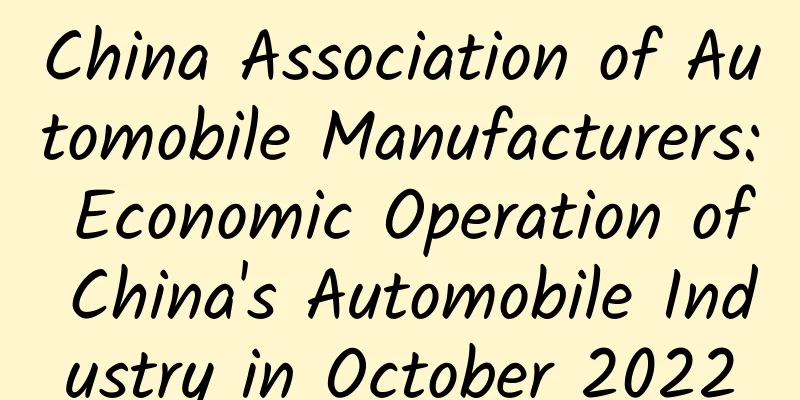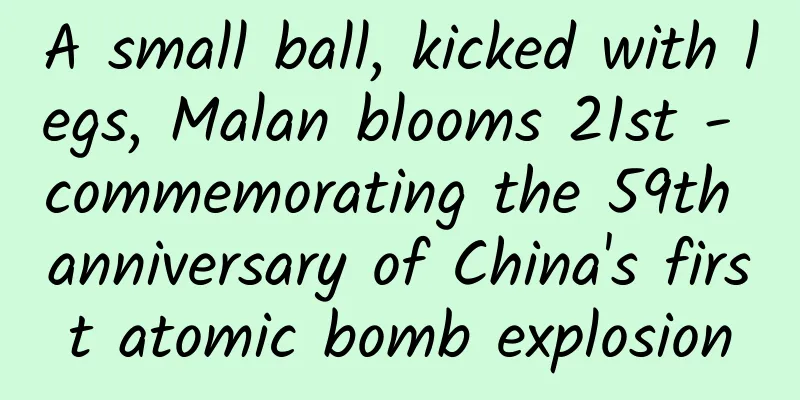The journey of snail noodles is not only stinky and fragrant, but also has these 3 highlights

|
Guangxi is a place with little presence. It does not have the grand and open scenery of Qinghai, Xinjiang and Tibet; nor does it have the bizarre and mysterious legends of Yunnan, Guizhou and Xiangxi; Guangxi cuisine is not as famous as the surrounding Cantonese and Hunan cuisines; even in terms of poverty and remoteness, Guangxi is not even on the list. In the past, when people said they were from Guangxi, they would add "just to the west of Guangdong"; now when people mention Liuzhou, the topic can continue with snail noodles. What kind of city is Liuzhou? 01 The birth of a national cuisine In the 1980s, Liuzhou was a prosperous industrial city. The Hunan-Guangxi, Guizhou-Guangxi and Jiao-Liu railways intersect here. Geography books once wrote that Liuzhou was an important transportation hub in the southwest, and the Liuzhou Railway Bureau was the only railway bureau in the country that was not located in a provincial capital. With the help of railways, Liuzhou's industry developed rapidly. Some retired workers nowadays are still full of pride when talking about Liuzhou in the 1980s and 1990s: "At that time, Liuzhou really had everything. Everything was made and everything made money!" They use "Liangmianzhen" toothpaste and "Qiangliguang" soap; they smoke "Jiatianxia" cigarettes and drink "Yufeng" beer; their bed sheets are "Denghua". As far away as Tianjin and Northeast China, there are billboards saying "Authentic Liuzhou Textiles"; there is a whole row of candy counters in Shanghai Department Store, displaying Liuzhou-produced longan soft candies, jam-filled candies, etc. In 1986, the Liuzhou Toothpaste Factory was producing "Liangmianzhen" toothpaste. Now "Liangmianzhen" Chinese medicine toothpaste can still be bought on the market. Photo courtesy: Liuzhou Industrial Museum I still have a 30-year-old "Shuangma" ceiling fan at home. Image source: Photo by the author Together with heavy industries such as steel and machinery, there were dozens of factories on one street in Liuzhou at that time, and dormitories were built next to the factory areas. The factory has night shifts, and after get off work, everyone is hungry, so they all make an appointment to have a midnight snack. Liuzhou people love hot and sour food, and a bowl of snails cooked with bone soup, sour bamboo shoots, fragrant peppers and basil is fresh enough; sour bamboo shoots smell bad, but the sour taste is richer than ordinary vinegar. In addition, the price is low, and it is suitable for eating while chatting, so "slurping snails" is undoubtedly the most popular midnight snack. Snail rice noodle. Copyrighted image, no permission to reprint Liuzhou people love rice noodles, which can quickly fill the stomach, so rice noodles are often sold at snail stalls. It is impossible to know who made the first bowl of snail noodles, but the earliest memory of Liuzhou people about snail noodles is in the early 1980s, when someone at a snail boiled stall at a night market asked to add oily snail soup to the rice noodles, and gradually the prototype of snail noodles was formed. In the mid-1980s, stall owners conducted research and improvements on the soup, snails, bones, peppers, and pickled bamboo shoots, and gradually finalized the taste of "spicy, sour, fresh, refreshing, and hot". Cheap, filling, sour, spicy and refreshing, snail noodles are the best fast food for workers. Snail noodle stalls began to spread all over Liuzhou, and gradually became the first original snack in Liuzhou. In the early 1990s, the market economy was opened up, and many factories in Liuzhou were restructured. Coupled with the planning of new industrial zones, there are now few factories in the city. Only the factory residential areas, red brick buildings and old household items still retain their old appearance. The industrial delicacy of snail noodles has thus been integrated into the lives of Liuzhou people. Many "authentic old shops" favored by gourmets are often those that have been open for more than ten years near factories or in the alleys of residential communities. Most of the diners are nearby residents and repeat customers who spread the word of mouth. Only good taste can keep the business going. "Authentic snail noodle stalls sell boiled snails at the same time. Go to the stall and take out the soup pot to see if there are snails in it." Now, snail noodles have become the number one original snack in Liuzhou, and many shops have developed many new ways of eating it based on it, such as snail and duck feet stew, fried snail noodles, snail and potato noodles, etc. Gubu Street Market was a distribution center for wholesale and sales of snails in the 1970s. It is said that snail rice noodle was born here. There are still many stalls selling boiled snails in the market. Source: Photo by the author Cities along the river always have aquatic products, but the most interesting thing is the advertising slogan. After the first season of "A Bite of China" was broadcast in 2012, Liuzhou manufacturers quickly began to mass-produce snail noodles. With good and stable quality, easy to cook, easy to transport and store, and low price, how many people know Liuzhou not because of a bag of snail noodles? In the 2018 folk food map, 28.4 million pieces of Liuzhou snail noodles were sold on Taobao alone, ranking first, truly becoming a national delicacy. At the foot of Yufeng Mountain, it is said that Liu Sanjie, the Zhuang singing fairy, rode a fish to heaven here. Image source: Photo by the author According to unearthed fossils, as early as 20,000 years ago in the Paleolithic Age, the Bailian Cave people began to catch snails for food, and they would knock off the tail of the snail shell when eating it, which is exactly the same as the people in Liuzhou today! Liuzhou people have been eating snails for thousands of years. The birth of snail noodles was accidental, but looking back now, it seems to be inevitable. 02 A generation of "magic car" You must be familiar with this kind of van. It may not look big, but it can hold a lot of space. It can easily hold more than 20 people and 100 cases of beer. It is often used for moving and transporting goods in cities, and it is the best means of transportation in rural counties. Wuling's "magic car". Image source: Internet Wuling has no problem climbing mountains, crossing muddy water, and entering Tibet; even racing on mountain roads is no problem for Wuling. It is no exaggeration to say that wherever there are cars, there is Wuling. A parade before the Liuzhou Lantern Festival in 1985. Photo courtesy of Liuzhou Industrial Museum This unprepossessing car has annual sales of nearly 500,000 units, firmly ranking in the top two on the national car sales list. In 2010, Forbes magazine, which reports on billionaires, used a special page to introduce Wuling to its elite readers on Wall Street: "The most important car on earth." In recent years, Wuling has been teased as the "Akina Mountain God Car", and jokes about it are everywhere on the Internet. Many luxury cars worth millions of yuan are vying to be proud to have a Wuling logo on a car that costs 40,000 yuan. What is even more magical than the magical car is the story of its birth. In 1928, the generals of the New Guangxi Clique invested in and built the Liuzhou Machinery Factory in Liuzhou, referred to as Liuji. In 1933, the blockaded Guangxi was short of oil, and Liuji developed a charcoal car with a speed of 40 kilometers per hour, which became the main means of transportation in the rear during the war. In 1937, the Anti-Japanese War broke out, and Liuji developed Guangxi's first aircraft - the fighter "Zhu Rongzhang" to participate in the war. In 1937, after the successful test flight of the "Zhu Rongzhang" aircraft, Bai Chongxi, a general of the New Guangxi Clique, took a photo with the developers and pilots. Photo courtesy: Liuzhou Industrial Museum Later, Liuji separated the power workshop into an independent factory, and was renamed "Liudong", "Liutuo" and "Liuwei". From the name changes, it can be seen that it has made many attempts to survive, and has successively produced diesel engines, tractors, and even sewing machines and looms. It was not until 1982 that Liutuo turned to the production of minivans. At first, it imitated Japan's Mitsubishi and named it Wuling. In 2002, Wuling made a desperate decision to donate most of its shares to SAIC and GM in exchange for automobile technology. The only condition was that the supporting manufacturers must all stay in Liuzhou. Liutuo workers are replicating Mitsubishi cars. From the exterior to the more than 2,500 parts, everything is measured and drawn manually, and then the molds are hammered and polished by hand. It took four years to replicate the first car. Photo courtesy: Liuzhou Industrial Museum What really made Wuling a legend was every little improvement that followed. Engineers worked on thousands of sets of data to widen the car body, from sheet metal to trim, just to hold half a box of beer. Originally, only 3 boxes of beer could be placed horizontally with some space left, but now 4 boxes can be placed at once. With these extra 10 centimeters, Wuling's sales soared. It may seem like a joke, but in fact, this is the essence of the "magic car": taking practicality to the extreme. In 1984, Liuzhou native and gymnastics prince Li Ning (left) and Liuzhou Machinery Factory Director Zhao Shengyi rode together on a 127-type high-horsepower boat-controlling speedboat produced by Liuzhou Machinery. Photo courtesy: Liuzhou Industrial Museum Wuling Hongguang has no automatic transmission, and its sound insulation, feel, and decoration can be ignored. Although it has nothing to do with "comfort" when sitting, it can seat 7 people, and the seats can be flipped up to carry goods; a 40,000 yuan car has rear-wheel drive and a high chassis, and its power structure and climbing ability are sufficient, so it is no problem to carry half a ton of goods, and it can run freely on muddy ponds and the Yunnan-Guizhou-Sichuan plateau. You might think you have to take an off-road vehicle when you go to Tibet, but the most common car in Tibet is the durable Wuling. Long before the Internet jokes became popular, Wuling was already popular in both urban and rural areas. If you buy other cars, you have to maintain the car; if you buy Wuling, the car will maintain you. In 1987, the annual output of Liuzhou Automobile Factory exceeded 5,000 vehicles. Now Liuzhou Automobile Co., Ltd. has been renamed "Dongfeng Liuzhou Automobile Co., Ltd." and mainly produces large trucks. Photo courtesy of Liuzhou Industrial Museum In addition to large companies such as Wuling, Liugong and Liuqi, there are many small auto parts companies in Liuzhou. For example, I visited a factory that produces seats for Liuqi. The technology is not very advanced. From steel frame, foam to outer fabric, it is a one-stop production line. The most important thing is that the size is compliant, and there are multiple verification processes in the factory; even the frames used to assemble the finished seats are adapted to Liuqi's production line - this means that the finished seats can be sent directly to the factory and installed on the car. The seat production workshop of Liuzhou Zhongling Auto Parts Co., Ltd. Source: Photo by the author There are thousands of such enterprises in Liuzhou, each with its own functions, producing different parts and simplifying the process and cost to the greatest extent. The condition of "supporting factories staying in Liuzhou" put forward 20 years ago now seems to be correct. Only by balancing the quality and cost of every detail can Liuzhou cars achieve the highest cost-effectiveness, and Wuling Hongguang can be invincible at a price of 40,000 yuan. In 2018, Liuzhou's automobile sales reached 2.36 million units, ranking among the top five automobile cities in China, and this small city has a population of only about 4 million. Liuzhou, an automobile-driven industrial city. 03 Hell-level industrial design Liuzhou is located in the middle of the Guangxi Plain, surrounded by mountains and has a typical karst landform. When Liu Zongyuan was demoted to Liuzhou as a governor in the Tang Dynasty, he wrote that "the mountains and trees block the view for thousands of miles, and the river flows like nine twists and turns." The Liujiang River does not simply pass through the middle of Liuzhou, but makes many turns. Liuzhou Wenhui Bridge. Copyright image, no permission to reprint In the past, traveling in Liuzhou was quite difficult. From upstream to downstream, the straight-line distance seemed very short, but it took a whole day to take a boat. During the Ming Dynasty, a floating bridge was built on the Liujiang River, which was a simple way to pass through by placing wooden boards on a row of boats. The floating bridge was very unstable and could be easily washed away when it rained and the water rose. Decades ago, when Liuzhou people crossed the bridge, they often threw a copper coin into the water to ensure safety. In the 1950s, Liuzhou finally began to build its first highway bridge. At that time, materials and technology were scarce, and 120,000 citizens spontaneously dug nearly 700,000 cubic meters of sand and gravel. Surveyors and designers repeatedly calculated the span, water depth, and foundation. At that time, the best design plan for a bridge was often the one that could be built with the least amount of steel. The first Liujiang Bridge took nearly 10 years to build. After that, more and more bridges were built in Liuzhou, and the speed of construction was getting faster and faster. Every time a new bridge was opened, it was a new place for Liuzhou people to explore. People would drive there for a ride and eat and drink nearby. This feeling is the same as when we open a new map dungeon in the game. There are 22 bridges on Liujiang River now, including Yanghe Bridge (continuous box girder bridge), Sanmenjiang Bridge (partial cable-stayed bridge), Queqiaojiang Bridge (single-cable suspension bridge), Bailu Bridge (steel truss arch bridge), Baisha Bridge (single-tower double-cable cable-stayed bridge)... Almost all bridge shapes and materials are included! Many students majoring in civil engineering and bridges come to Liuzhou specifically to visit. In one day in Liuzhou, you can basically see all types of bridges, so Liuzhou is also known as the "Bridge Museum". Bailu Bridge (the most complex bridge in Liuzhou). Copyrighted image, no permission to reprint In addition to the bridges themselves, bridge construction brings more expansion and accumulation of engineering technology. For example, the world's number one engineering prestressing enterprise, Ovim Machinery Company, is a local enterprise born and bred in Liuzhou. There are almost no duplicates in the more than 20 bridges on the Liujiang River. Many of Ovim's bridge technologies are accumulated in the practice of bridge construction in Liuzhou over the past few decades. Ovim was responsible for the installation of cables for almost all large bridges in China, including the Hong Kong-Zhuhai-Macao Bridge. In 2013, he began to participate in the construction of the Five-hundred-meter Aperture Spherical Radio Telescope (hereinafter referred to as: FAST). FAST is the ultimate means for human beings to explore the distant starry sky, so a large number of modules far exceeding industrial standards are needed in its construction. For example, the steel cables need to be equipped with reflective panels, and they often need to be adjusted and stretched. After repeated experiments, Ovim increased the strength of the steel cables from 250 MPa to 500 MPa. The technology improved during the construction of FAST was used by Ovim in future bridge construction. Baisha Bridge. Copyrighted image, unauthorized reproduction For example, the most amazing Baisha Bridge in Liuzhou. In engineering design, emphasis is often placed on "horizontally and vertically", simplifying the structural forces to the greatest extent possible. Even if there are special shapes, it is best to maintain them in the same plane. The Baisha Bridge is a "space-shaped twisted antisymmetric full floating system". Its cable tower is like a Möbius strip. The entire structure is not in any plane, but a pure three-dimensional structure! This makes the cable tower have stress in any direction, and the stress will be superimposed on each other. Coupled with the weight of 4,178 tons, the difficulty of designing and building can be said to be hell-level. To install the "scaffolding" (high-level lifting bracket) of the Baisha Bridge, Ovim used hydraulic shifting technology to lift the 4,178-ton cable tower. Photo: Ovim Machinery Company The bridge was built using Ovim's latest cable and hydraulic technology. It is equivalent to first building a huge scaffolding and then moving a simple factory in. The Baisha Bridge was completed in 2018. It is the world's tallest and largest span asymmetric cable-stayed bridge. In addition to its practicality and stability, it also represents the pinnacle of Liuzhou's architectural art and industry. 04 Industrial City If you come to Liuzhou now, you may not think it is an industrial city. All you can see is blue sky, clear rivers and mountains with lush vegetation. In fact, Liuzhou had also experienced a period of heavy pollution. In the 1990s, Liuzhou was one of the "four major acid rain cities". Factories were built in the urban area, and the streets were full of chimneys. The rain was all acid rain. Bicycles left outside would rust in a few days, and the stones on the mountains were corroded, revealing white rock. It took decades of dismantling boilers, replacing coal with gas, planning and relocating new industrial zones, and expanding power plants to provide unified power supply. Liuzhou has restored its current green mountains and clear waters, and was rated as a livable city in 2015. In other words, industrial upgrading has been completed. Liuzhou Sanjiang Dong Village. Copyrighted image, no permission to reprint In fact, when you walk on the streets of Liuzhou, you can still intuitively feel the industrial atmosphere: in addition to ordinary shops, Liuzhou is full of machinery, hardware and material stores, so much so that I learned the word "bearing" from roadside billboards when I was very young. My uncle told me a little story. When he opened a factory in Guilin, he couldn't find a certain sealant anywhere, but it could be bought in any street shop in Liuzhou. This is Liuzhou’s industrial foundation, or to put it another way, it’s called ecology. Source: China National Geographic BOOK The cover image and the images in this article are from the copyright library Reproduction of image content is not authorized |
<<: What is it like to have diabetes at an early age? Why do people get diabetes?
Recommend
Tesla sets up a technology innovation center in Beijing to undertake research and development of new energy products
Tesla's global vice president Ren Yuxiang att...
Is Apple TV really dead?
Recently, WSJ reported that Apple terminated its ...
After Ji Yue falls, who will be the next?
Cars come and go, people come and go. In the tide...
Create vitality, ZIVOO seizes the commanding heights of smart home fashion
Home electronic products always give people the i...
A guide to creating short video content!
Short videos are the most popular form of communi...
If you want sunglasses to be easy to use and stylish, they must be polarized! Here's a tip to help you identify polarized sunglasses!
The summer sun shines brightly, traveling 150 mil...
Dissecting Wanda e-commerce: How did it create O2O by spending 5 billion RMB and hundreds of millions of credit cards?
The bet between Wang Jianlin and Jack Ma has come...
The most concise photovoltaic science popularization in history is here
"Photovoltaic will usher in an explosive per...
How does the blood in the legs and feet overcome gravity and flow to the heart?
Who can fight against the gravity of the earth? B...
If you don't wipe your butt properly, you will get hemorrhoids. How to prevent hemorrhoids? If you don't know, read this
Wiping one's ass is a technical job. Regardle...
Overall trends in the tourism industry and advertising optimization strategies
When promoting the tourism industry, we often see...
Zhang Chaoyang: Make the lives of Chinese netizens more enjoyable
With the rapid development of Internet technology...
World Vitiligo Day丨Can vitiligo patients take vitamin C? The disappearance of white spots means the disease is cured? Stop spreading these rumors!
Is it good for patients with vitiligo to get more...
Programmers need to have continuous output
I believe that all programmers need to find a goo...
Internet advertising promotion planning methods!
What is planning? Planning is to simplify complex...









